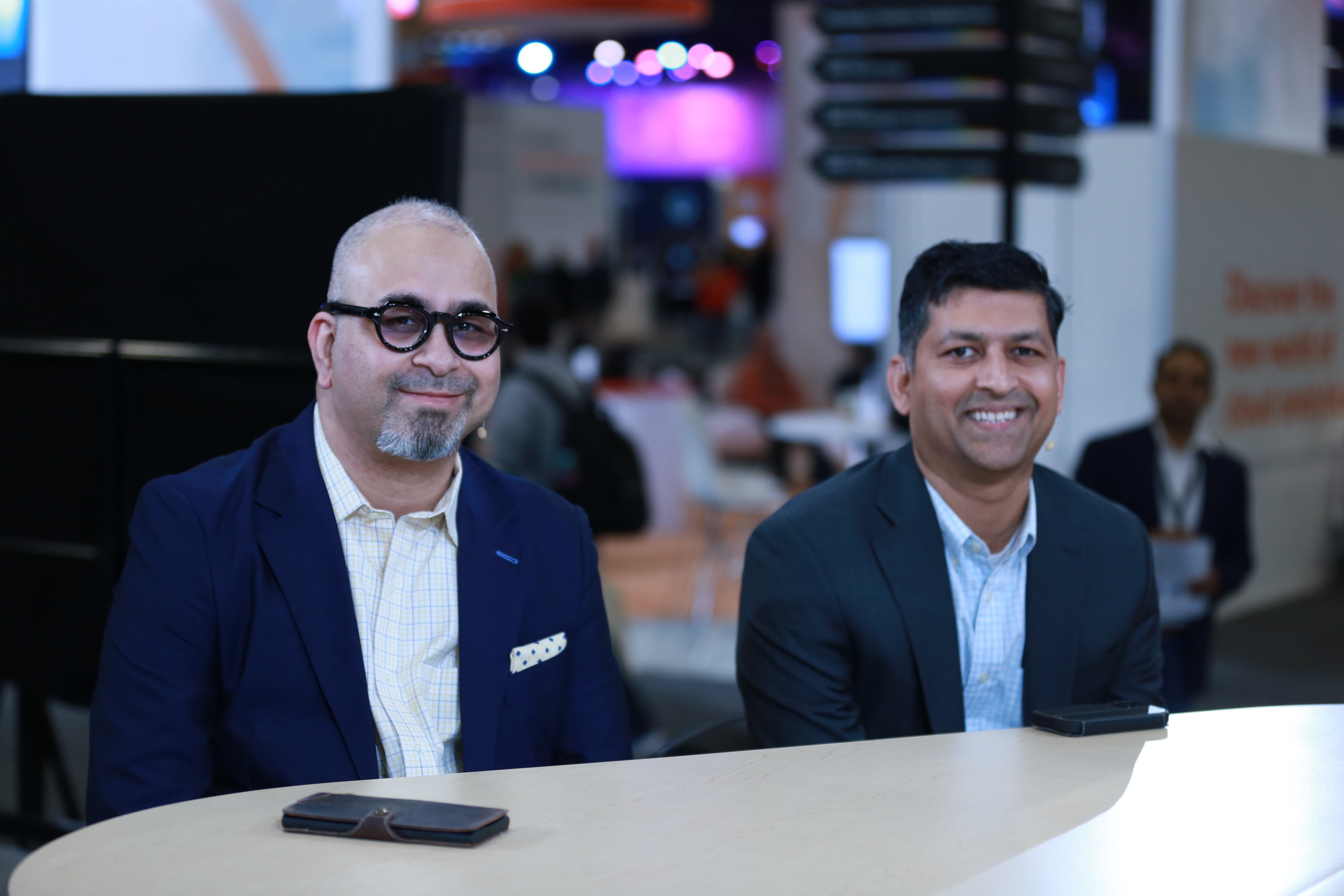 CLOUD
CLOUD
 CLOUD
CLOUD
 CLOUD
CLOUD
As industrial enterprises continue to adopt and leverage the burgeoning options when it comes to cloud technologies, concepts like hybrid, multicloud, automation, machine learning, edge computing and more are all just pieces of the puzzle in solving larger industrial questions like global issues in supply chains, tracking supplies across the world and cultivating data-driven results.
So what are some challenges that industrial businesses are facing, and what are some of the exciting ways they are implementing cloud technologies?
Krishnaprasath Hari (pictured, right), vice president of cloud engineering at Hitachi Vantara LLC, and Sid Sharma (pictured, left), global leader for IoT and industrial cloud at Hitachi Vantara, spoke with theCUBE industry analysts Savannah Peterson and Dave Vellante at AWS re:Invent, during an exclusive broadcast on theCUBE, SiliconANGLE Media’s livestreaming studio. (* Disclosure below.)
They discussed the unique issues that industrial companies face, as well as how cloud technologies can help industrial companies thrive in an increasingly unpredictable market. [The following content has been condensed for clarity.]
Vellante: Could you talk about your point of view on what I call supercloud?
Hari: At the end of the day, the cloud needs to be able to support businesses by providing their services closer to their consumers. So, the challenges are going to be there in terms of like reliability, resilience, cost, security. Those are the ones that … many of the enterprises are grappling with in terms of the challenges. And … the way how we approach our customers and work with them is to be able to bring resilience into the cloud, into the services which are running in cloud and by driving automation. It cannot be manually executed. It has to be automated. So, automation is the key in terms of making the services leveraged from all of this cloud.
Peterson: How do you help industrial customers solve the complexity as they begin their transformation journey? How do you guide them through that process?
Hari: It is to look at the outcome working backwards. How do you look at the business outcome? What is the value that you’re looking to drive? It’s not to be pinned through one particular cloud. I know there is lot of technology choices that you can make and lot of deployment models that you can choose from, but at the end of the day, having a common operating model which is … modern, agile — and it is keeping the outcomes in the mind — that is what we do with our customers. And cloud is just one part of the LEGO blocks that provides that overall scheme.
Vellante: Let’s say you’ve got this resilient foundation. How do they turn that into value for their customers? Do you have any examples that you can share?
Hari: I can start with what we’re doing for one of the … world’s largest facility infrastructure, power, cooling, security, monitoring company that has their products deployed in 2,000 locations across the globe. For them, an always-on-business means you are monitoring the temperature. A temperature shift of one to two degree can affect even the sustainability goals of … our customer, but also their end consumers. So how do you monitor these … critical parameters? How do you have a platform? How you have cloud resources that are going to be always on, that are going to be reliable, that are going to be cost-effective as well? [That] is what we are doing for one of our customers.
Sharma: We are working with a group in England. It’s called West Coast Partnership. And they had a edge device which was increasing in size. Now this edge device was becoming big, because the parameters which go into the edge device were increasing because of regulation and because the rail is part of national security infrastructure. We have worked with West Coast Partnership … to create a miniaturization of this edge device, because if the size of the edge device is increasing on the train, then the weight of the train increases, and the speed profile, velocity profile, everything goes down. So we have miniaturized the edge device. Secondly, all the data profiles — signal control, traction control, traction motors, direction control, timetable compliance — everything has been kept uniform. And we have done analytics on cloud.
Here’s the complete video interview, part of SiliconANGLE’s and theCUBE’s coverage of AWS re:Invent:
(* Disclosure: Hitachi Vantara LLC sponsored this segment of theCUBE. Neither Hitachi Vantara nor other sponsors have editorial control over content on theCUBE or SiliconANGLE.)
Support our mission to keep content open and free by engaging with theCUBE community. Join theCUBE’s Alumni Trust Network, where technology leaders connect, share intelligence and create opportunities.
Founded by tech visionaries John Furrier and Dave Vellante, SiliconANGLE Media has built a dynamic ecosystem of industry-leading digital media brands that reach 15+ million elite tech professionals. Our new proprietary theCUBE AI Video Cloud is breaking ground in audience interaction, leveraging theCUBEai.com neural network to help technology companies make data-driven decisions and stay at the forefront of industry conversations.